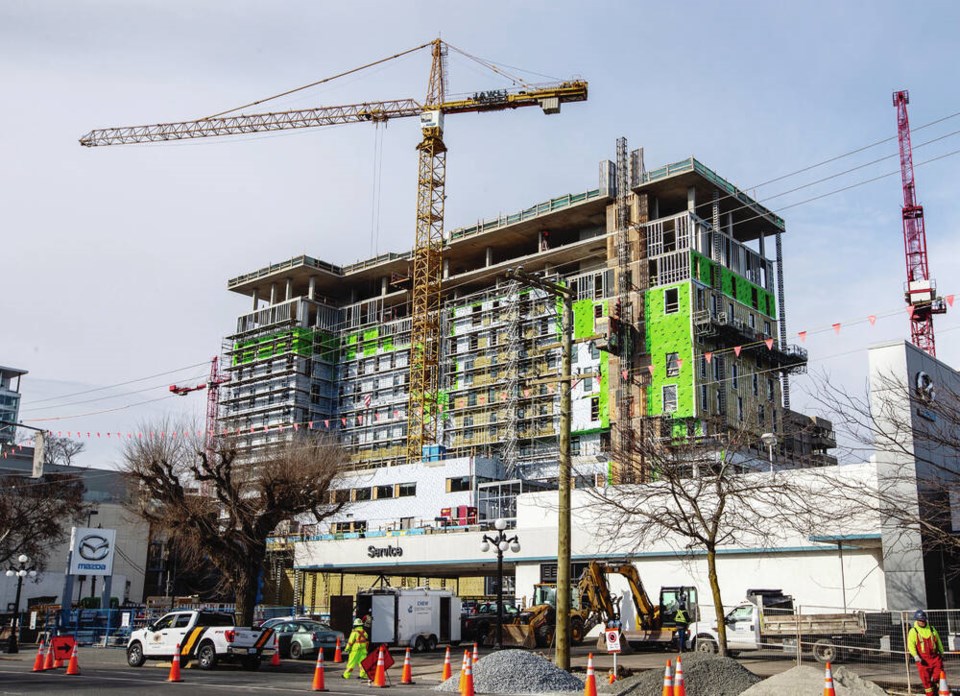Greater Victoria’s unemployment rate dipped to 4.1 per cent last month, according to Statistics Canada’s monthly labour force survey. That’s a slight change from the 4.2 per cent in February and a significant reduction from the 5.6 per cent in March last year. But in pre-pandemic March 2019, Victoria’s rate was 3.0 per cent.
“We’ve had one of the lowest unemployment rates for years, which is mixed blessing for our regional economy,” said Bruce Williams, chief executive of the Greater Victoria Chamber of Commerce. “We are fundamentally sound and many sectors have rebounded from the pandemic, but the challenge facing all employers, including our members, is finding and keeping the right staff.”
The shortage of labour in the region — a problem that many centres in Canada are facing — continues despite a surge in the size of the available labour force.
Statistics Canada said Victoria’s labour force had 229,800 people available to work in March, a jump from the 196,300 recorded in March of 2019.
Williams said that’s welcome news, as people need jobs and employers need people to achieve their economic potential. But he said people also need homes, and the region’s population is growing faster than it’s able to add new homes. “The labour market numbers really highlight how urgently we need a concerted effort by all levels of government to increase housing supply.”
While the business administration and support services sector saw the loss of 3,000 positions in Victoria between last March and this year, several local sectors saw huge increases in the number of employed over that same time period.
The ranks of health-care and social-assistance workers surged by 7,900 over the last year to 35,100, construction added 3,700 positions for a total of 17,300 jobs, and the information, culture and recreation sector increased by the same amount to 10,100.
Provincial Jobs Minister Ravi Kahlon said B.C. continues to lead the country in economic recovery with eight straight months of job growth. The province created 10,500 new jobs in March.
Kahlon noted there are now 94,500 more people working in B.C. than there were before the pandemic. B.C.’s unemployment rate is 5.1 per cent, the lowest it has been since the pandemic.
“Our government has been determined to grow good-paying jobs in our private-sector — both with unprecedented supports to get through the pandemic and new investments to grow jobs and opportunity as we recover,” Kahlon said.
Canada’s unemployment rate dropped to a record low last month as more people jumped into a hot labour market — and economists say the jobless rate could fall even lower.
The March unemployment rate registered at 5.3 per cent, down from the 5.5 per cent recorded one month earlier as the economy added 72,500 jobs.
Statistics Canada said Friday it was the lowest jobless rate since comparable data became available in 1976 and down from the previous low of 5.4 per cent in May 2019. It was also a turn-around from the early days of the pandemic in May 2020 when the unemployment rate hit a record 13.4 per cent.
CIBC senior economist Andrew Grantham said oil-producing provinces such as Alberta and Saskatchewan were not at full employment before the pandemic struck, and may have space for more job gains that could yet drive down the jobless rate. “There is scope maybe for the unemployment rate to grind a little bit lower,” he said.
“That means that there’s a little bit of scope for employment growth to continue to outpace population growth, but just not to the same extent that it has recently.”
Driving the unemployment rate down last month were gains in a variety of sectors. Key to the gains were 24,500 women over age 55 finding work and 35,300 men between 25 and 54 taking jobs, primarily part-time.
The tightening of the labour market meant average hourly wages were up to 3.4 per cent year-over-year in March compared with a year-over-year gain of 3.1 per cent in February.
— With files from the Canadian Press
The March unemployment rate registered at 5.3 per cent, down from the 5.5 per cent recorded one month earlier as the economy added 72,500 jobs.
Statistics Canada said Friday it was the lowest jobless rate since comparable data became available in 1976 and down from the previous low of 5.4 per cent in May 2019. It was also a turnaround from the early days of the pandemic in May 2020 when the unemployment rate hit a record 13.4 per cent.
CIBC senior economist Andrew Grantham said oil-producing provinces like Alberta and Saskatchewan were not at full employment before the pandemic struck and may have space for more job gains that could yet drive down the jobless rate.
“There is scope maybe for the unemployment rate to grind a little bit lower,” he said.
“That means that there’s a little bit of scope for employment growth to continue to outpace population growth, but just not to the same extent that it has recently.”
Driving the unemployment rate down last month were gains in a variety of sectors. Key to the gains were 24,500 women over age 55 finding work and 35,300 core-aged men between 25 and 54 taking jobs, primarily part-time.
The tightening of the labour market meant average hourly wages were up to 3.4 per cent year-over-year in March compared with a year-over-year gain of 3.1 per cent in February.
- with files from The Canadian Press



